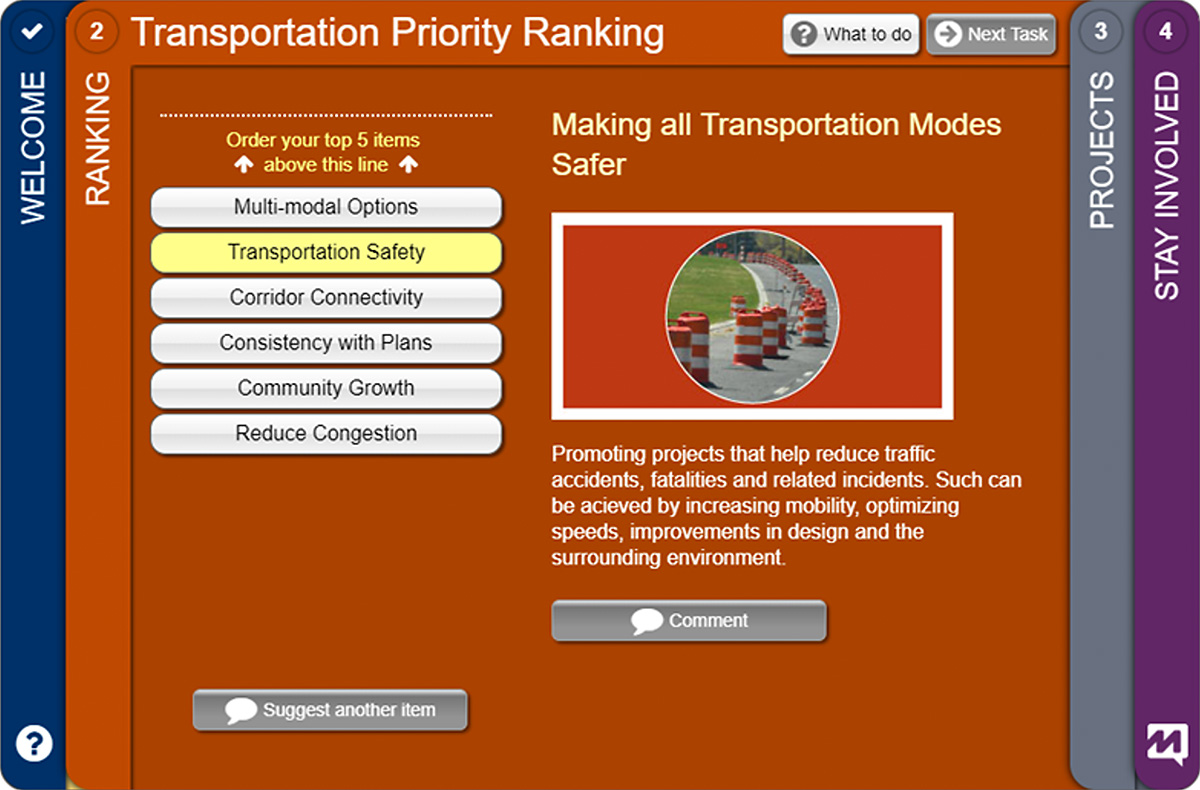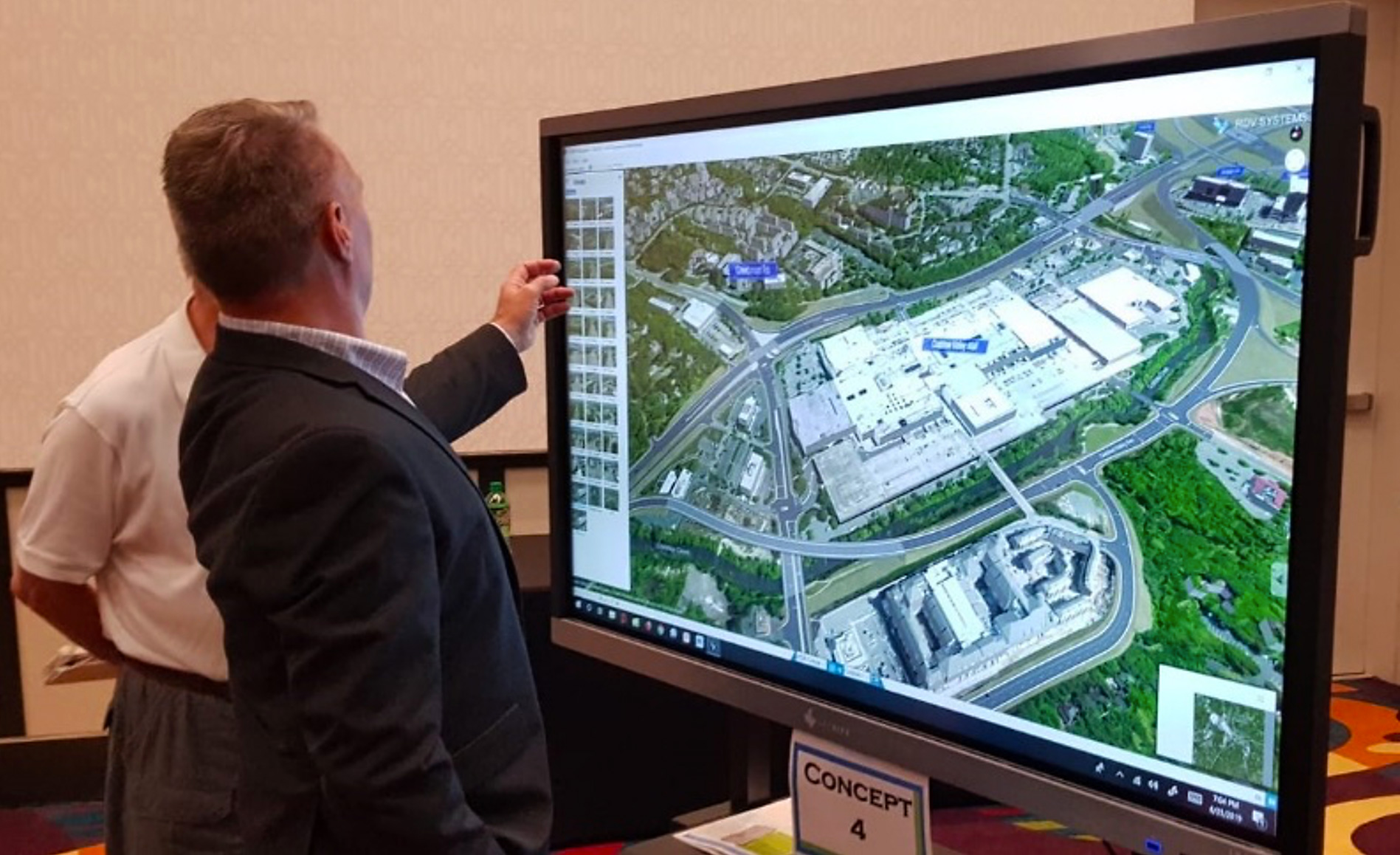Transportation agencies often struggle with how to effectively engage with and inform the public about upcoming projects and capture vital feedback. Many engagement efforts experience low participation and have difficulty capturing diverse viewpoints from a variety of communities. There may also be language and cultural barriers or scheduling conflicts that prevent people from attending meetings in person.
“The public’s expectations of how we, as agencies, interact with them is ever changing,” said Lana Lau, FHWA’s virtual public involvement (VPI) team co-leader. “This doesn’t mean the public isn’t interested in participating. It just means we need to be more innovative and thoughtful in our approach.”
FHWA’s VPI initiative, an Every Day Counts (EDC) innovation, encourages the use of digital technology and innovative strategies to make it easier and more convenient for people to participate in the transportation decision-making process.
VPI tools and techniques supplement face-to-face information sharing. They do not replace the need for in-person meetings, nor do they change existing public information requirements established by law.
As part of EDC round 5, FHWA met its goal to help 38 States expand use of VPI tools and techniques. FHWA also created a VPI web page that features an innovation overview video, fact sheets, case study videos, and reports highlighting key outcomes of workshops and peer exchanges.
A focus of EDC round 6 (EDC-6) will be encouraging States to institutionalize the use of VPI tools as a regular way of doing business. FHWA considers a State department of transportation (DOT) to have institutionalized VPI if its program does the following:
- Includes accommodations for persons with hearing or visual disabilities.
- Integrates VPI into regular business practices, and VPI is part of policies and guidance such as the Public Involvement Plan or the Public Participation Plan.
- Has staff with the skills and technology to execute VPI.
“Another goal for EDC-6 is to increase public participation for traditionally underserved communities such as minorities, low income, children, elderly, and the disabled,” said Jill Stark, FHWA VPI team co-leader. “We also plan to reach out beyond the State DOTs to provide technical assistance to metropolitan planning organizations, rural transportation planning organizations, and tribal governments.”
 North Carolina DOT’s use of all-in-one tools significantly increased the number of participants providing project input. Participants were able to better understand projects, participate at convenient times, and provide detailed feedback. Credit: North Carolina DOT
North Carolina DOT’s use of all-in-one tools significantly increased the number of participants providing project input. Participants were able to better understand projects, participate at convenient times, and provide detailed feedback. Credit: North Carolina DOTThere are many potential benefits to using VPI, such as improved communication and collaboration with stakeholders. Virtual tools and platforms can be made accessible to communities efficiently, many at a lower cost than traditional public involvement methods. Another benefit is accelerated project delivery. When agencies effectively engage the public in the beginning of a project, it helps identify issues early, reducing the need to revisit decisions later.
The VPI team is promoting eight categories of tools during EDC-6 and may add more as new technology is developed.
Mobile applications, such as the app created by the Delaware DOT, can include information about meetings and workshops, construction projects, transit services, electronic vehicle charging station locations, and more.
Project visualization involves the creation of images, diagrams, or animations to communicate a message. The Visual Engineering Resource Group at Washington State DOT develops visualizations to support the department’s project development processes. A combination of 3D modeling, videos, photos, and animations is used to give the public a clearer idea of how a project may affect them. Agencies can adjust visualizations simultaneously as they receive feedback at a public meeting.
 Digital tools can be used to enhance in-person events. Credit: North Carolina DOT
Digital tools can be used to enhance in-person events. Credit: North Carolina DOTMapping tools allow information to be communicated visually, making it easier for the public to digest complicated data in a concise, clear format.
Do-it-yourself videos are an engaging way to communicate with the public, especially since smartphones and other relatively inexpensive recording devices are readily available.
Crowdsourcing tools are digital tools, both online and mobile, used to assemble ideas, comments, or suggestions and provide a forum for others to assess the value of those suggestions by voting for or against them.
Online meetings enable interactive aspects such as mapping and survey tools people can explore and use at their own pace.
All-in-one tools have been developed by several software companies to combine crowdsourcing features, mapping, visualization, file storage, and survey instruments. North Carolina DOT found that using all-in-one tools significantly increased the number of participants providing input on projects, and that many barriers to participation disappeared.
Digital tools for in-person events may include techniques such as live polling to enhance the public meeting experience. Staff can engage with participants at meetings and display responses in real time.
